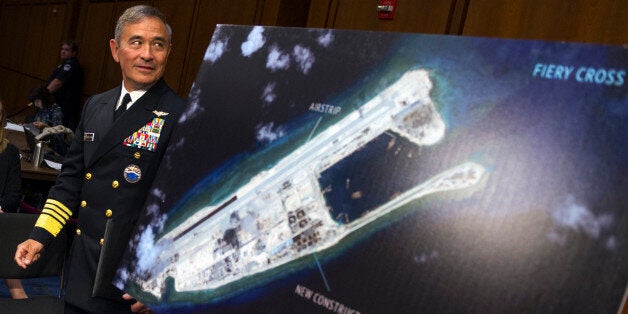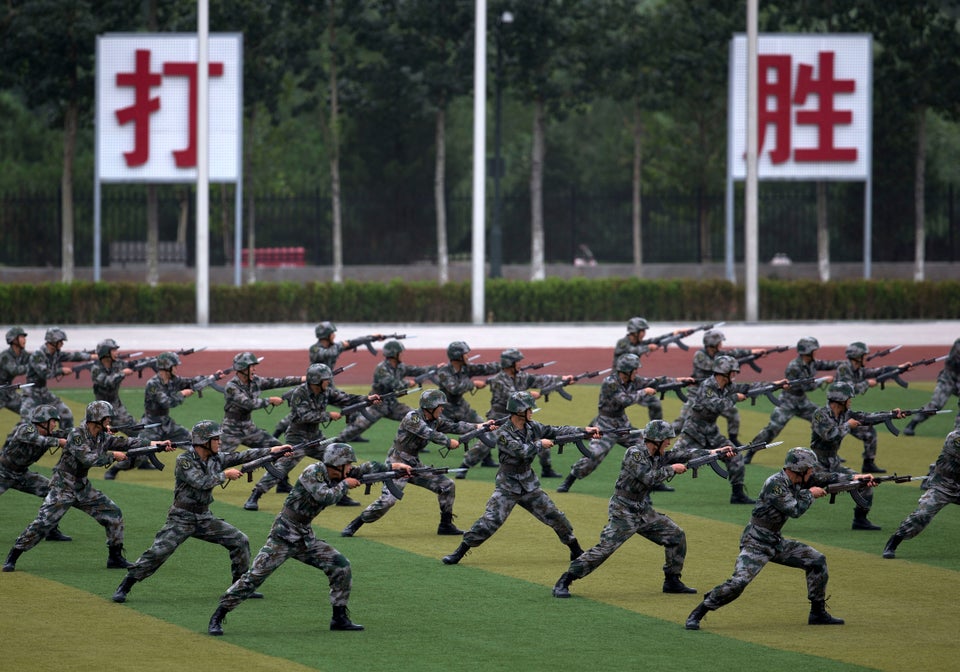
So, the much-heralded U.S. freedom of navigation operation in the South China Sea has finally seen daylight. The designated lead, the USS Lassen, is a guided missile destroyer which has already been patrolling the South China Sea in recent weeks. After leaving port in East Malaysia this morning, the destroyer sailed on a course for the Spratly Islands that would take it within 12 nautical miles of the Subi and Mischief reefs, two submerged features occupied by China and recently built up into artificial islands. Earlier U.S. officials had suggested the U.S. warship would would be accompanied by patrol aircraft, to demonstrate overflight rights in parallel.
The aim of the FoN operation is to physically demonstrate the U.S. Navy's legal right to operate in the area -- including in proximity to low-tide elevations that are not entitled to generate a territorial sea -- but not to challenge China's sovereignty claims per se. FoN "assertions" are meant to be conducted with restraint in order to emphasize their legal character, and to counter allegations that such operations amount to a modern form of "gunboat diplomacy."
In the background, however, the over-the-horizon presence of a U.S. aircraft carrier group signals that the U.S. takes the threat of escalation seriously and can respond if Chinese civilian or naval forces were to seriously challenge U.S. warships or aircraft.
The greater risk is that China will use U.S. FoN operations to justify an overtly military phase to the island construction project.
The operation is unlikely to end here and will probably usher in a sustained U.S. naval and air presence in the weeks ahead. To address Chinese charges of double standards, the U.S. Navy should avoid involving Southeast Asian Spratlys claimants directly in the operations, and should be prepared to assert FoN where they have also engaged in creeping jurisdiction. In the next, more open-ended phase, U.S. allies including Australia could make their own distinct contribution, though this should avoid the appearance of clutching on to Uncle Sam's coattails.
It didn't have to be like this. By prevaricating so publicly and for so long the U.S. unnecessarily put its credibility on the line and has also made it harder for China to calibrate its reaction. For all that the U.S. genuinely believes it is acting in the common good by upholding "freedom of the seas," the South China Sea has already become a symbolic U.S.-China sparring ground, raising the temperature for what should have been a routine operation conducted months ago.
Ultimately, it may take a crisis for the U.S.-China relationship to reach a stable equilibrium. But in the current context, I believe the doom-laden scenario of a U.S.-China naval clash in the South China Sea to be remote. As I have argued elsewhere, the greater risk is that China will use U.S. FoN operations to justify an overtly military phase to the island construction project.
The best that can probably be hoped for is that Washington's belated actions, although conducted at higher cost and risk than should have been the case, can hold the line on U.S. resolve until the next administration. Depending on how Beijing frames its response, one silver lining could be improved clarity about the extent of China's maritime boundaries within the ambiguous U-shaped line in the South China Sea. But don't hold your breath: we're in this for the long haul.
Also on WorldPost:

